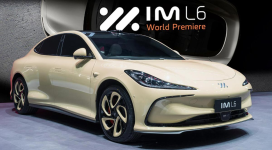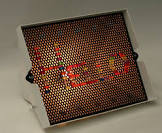https://insideevs.com/news/745068/mg-semi-solid-state-ev/
"China’s SAIC now owns MG and it makes all its cars in China. It plans to launch the new EV in 2025 and says the semi-solid state battery won’t raise the vehicle’s price. It will come standard and likely related to (or the same as) the pack in another SAIC-owned brand, IM Motors, which unveiled its semi-solid-state sedan earlier this year.
The IM L6 has a 133-kilowatt-hour semi-solid-state battery pack, giving it a claimed CLTC range of over 1,000 kilometers (623 miles). It’s built on an 800-volt platform and its maker says it can charge at 400 kilowatts, adding 400 km (249 miles) of range in 12 minutes.
However, unlike the IM L6, which gets the semi-solid-state battery as an option in the highest trim (you can also get it with two cheaper NMC packs), the MG derivative will be semi-solid-state-only. The L6 with the mid-tier NMC battery costs the equivalent of around $41,500, while the top “Lightyear Max” trim with the special battery costs $45,650."
"China’s SAIC now owns MG and it makes all its cars in China. It plans to launch the new EV in 2025 and says the semi-solid state battery won’t raise the vehicle’s price. It will come standard and likely related to (or the same as) the pack in another SAIC-owned brand, IM Motors, which unveiled its semi-solid-state sedan earlier this year.
The IM L6 has a 133-kilowatt-hour semi-solid-state battery pack, giving it a claimed CLTC range of over 1,000 kilometers (623 miles). It’s built on an 800-volt platform and its maker says it can charge at 400 kilowatts, adding 400 km (249 miles) of range in 12 minutes.
However, unlike the IM L6, which gets the semi-solid-state battery as an option in the highest trim (you can also get it with two cheaper NMC packs), the MG derivative will be semi-solid-state-only. The L6 with the mid-tier NMC battery costs the equivalent of around $41,500, while the top “Lightyear Max” trim with the special battery costs $45,650."







